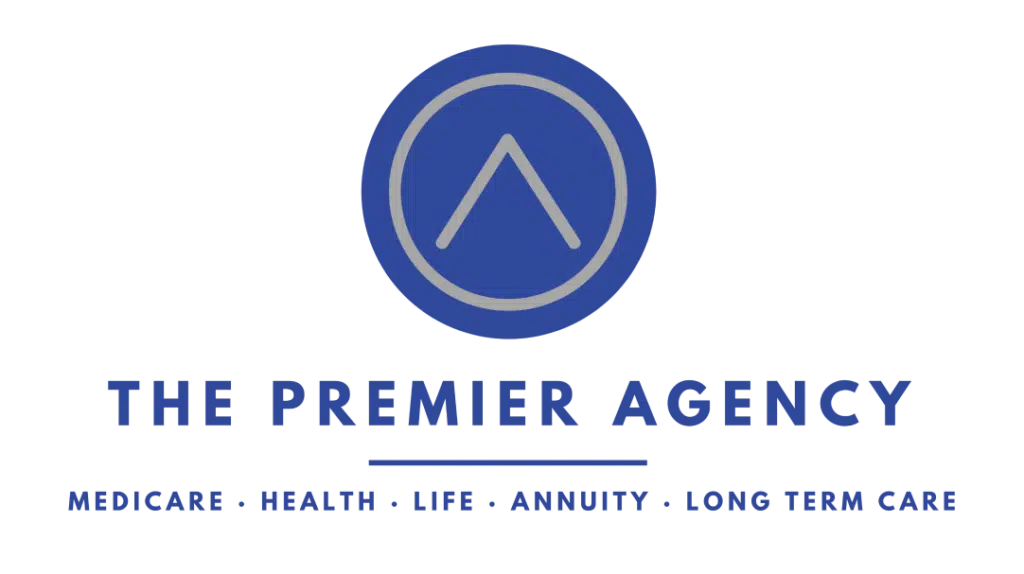Navigating health insurance in Arizona requires brokers to focus on their target market to sustain and increase income effectively. By examining their internal rate of return, brokers can evaluate their financial stability and make well-informed decisions to streamline their supply chain. Reviewing key performance indicators (KPIs), keeping an eye on inventory turnover reveals how efficiently they’re converting policies into revenue. Brokers can adjust strategies to ensure that every client interaction propels their agency forward. In this article, learn about the essential KPIs that lead to success in the competitive landscape of Arizona’s health insurance sector.
Key Takeaways
- Brokers Use a Variety of KPIs Like Churn Rate, Forecasting Accuracy, and Contract Efficiency to Gauge Their Agency’s Performance
- Customer-Focused Metrics Such as Policy Renewal Rates and Customer Satisfaction Scores Are Vital for Assessing Client Loyalty and Service Effectiveness
- Sales Volume Goals, Response Times to Inquiries, and Efficient Claims Processing Are Directly Linked to a Broker’s Success in the Arizona Health Insurance Market
- Continuous Broker Training and Strategic Benchmarking Against Industry Standards Drive Growth and Improve Service in a Competitive Marketplace
- Technology and Advanced Tools, Including AI and Enterprise Resource Planning Systems, Play a Pivotal Role in Optimizing Broker Performance and Client Engagement
Understanding Key Performance Indicators for Health Insurance Brokers

Brokers in the dynamic landscape of Arizona’s health insurance sector constantly seek ways to refine their approach to serving clients. Key Performance Indicators (KPIs) are the methodology used to quantify this success. They offer a measurable value that reveals whether a broker effectively reaches business objectives. By adopting KPIs as a tool, brokers can gain insight into client relations, assessing factors like customer satisfaction and the clarity of terms of service provided. This monitoring is not a mere formality; it’s an integral part of a broker’s strategy to understand and enhance their market position. Consequently, health insurance professionals must know what to track and why, setting the stage for improved performance and client trust.
Defining Key Performance Indicators (KPIs) in the Health Insurance Sector
Key Performance Indicators are crucial gauges that brokers utilize to monitor and enhance financial health, regulatory adherence, and service quality. A broker might analyze debt levels to maintain fiscal stability, profit margin to measure financial success, and use a database to track this information efficiently. Additionally, monitoring compliance with regulation and adhering to ethical standards ensures that brokers operate within legal bounds and maintain the trust of their clientele.
Why Brokers Need to Monitor KPIs
Brokers who monitor Key Performance Indicators (KPIs) arm themselves with the foresight they need to thrive. Monitoring the churn rate, for instance, tells a broker how often clients discontinue their coverage, which can signal the need for improved relationship management or policy benefits. By understanding these metrics, brokers can make informed decisions about forecasting future trends, ensuring the contracts they offer align well with clients’ needs.
| KPI Category | Description | Tool for Tracking |
|---|---|---|
| Churn Rate | Measures client retention and loss | Customer Relationship Management Software |
| Forecasting Accuracy | Assesses the precision of sales forecasts | Advanced Analytical Matrix |
| Contract Efficiency | Evaluates the speed and effectiveness of contract processes | Contract Management System |
Top KPIs Every Arizona Health Insurance Broker Should Track

In a market where knowledge and digital marketing are pivotal, Arizona health insurance brokers aim to thrive while adapting to demand. Tracking the number of new policies sold showcases an agency’s growth and its ability to attract new clients. Policy renewal rates hint at customer satisfaction and product relevance, are equally important. Additionally, customer retention rates provide a window into the ongoing value brokers deliver, directly affecting the agency’s health and longevity. Furthermore, in a fast-paced environment, the average response time to inquiries can significantly influence client perception and satisfaction, impacting both customer retention and the cost of goods sold. For brokers, these KPIs are not just numbers; they are the pulses of successful operation and client trust.
Number of New Policies Sold
The Number of New Policies Sold is a crucial indicator for brokers, directly impacting the net income and the growth of an organization’s portfolio. Brokers who excel at selling policies not only boost their agency’s bottom line but also validate their ability to leverage personal and telephone communications into tangible results.
- Evaluating client needs and matching them to policies enhances portfolio diversity.
- Effective use of telephone outreach can increase policy sales and net income.
- Tracking new policy trends aids an organization in staying competitive.
Policy Renewal Rates
Understanding the definition and importance of Policy Renewal Rates enables brokers to grasp how effectively they maintain their client base in the face of innovation and changing needs. It’s a metric suggesting how often clients find value in their policies enough to renew them, despite the tax implications and other financial considerations. A well-maintained dashboard keeping track of these rates provides brokers with immediate insights into client loyalty and service satisfaction.
Customer Retention Rates
The science behind keeping clients can be as crucial as attracting them, and for brokers, this is where the focus on customer retention rates comes to the fore. A strong team emphasizing accessibility and employing the latest technology ensures clients feel valued and well-served, cementing the agency’s reputation and securing client allegiance.
Average Response Time to Inquiries
The dimension of care a broker extends to their clients is often reflected in their average response time to inquiries, a critical aspect of a smooth workflow and reliable customer service. Brokers who excel in minimizing this variance not only demonstrate their commitment to the client’s financial plan but also affirm the agency’s reputation as a responsive property in the marketplace.
Using Sales Volume as a KPI for Broker Performance

Brokers, often working remotely, must keep a precise inventory of their sales activities to inform strategic management decisions. Measuring sales volume over time allows brokers to identify patterns and opportunities for growth. Alongside this, setting ambitious yet attainable sales volume goals ensures that brokers remain focused and driven. Reliable communication systems, such as maintaining an updated email address list, are vital in fostering meaningful connections with clients and nurturing prospects, ultimately contributing to a broker’s sales performance trajectory.
Measuring Sales Volume Over Time
Keeping a regular tally on sales volume gives brokers in Arizona’s health insurance agencies insight into their market positioning and effectiveness within their territory. Human resources within the agencies should be tuned into the emerging social media trends and the broader culture surrounding health insurance to maximize engagement and sales results. It becomes essential for brokers, especially within the busy contact center environments, to evaluate their progress methodically and adjust strategies accordingly over time.
- Reviewing monthly sales reports to monitor market engagement
- Assessing the effectiveness of social media campaigns on sales outcomes
- Adapting sales techniques to align with cultural shifts and consumer behavior
- Utilizing feedback from the contact center to refine client interactions
Setting Sales Volume Goals for Brokers
For brokers in Arizona’s health insurance agencies, setting sales volume goals is a direct pathway to measuring and enhancing operational efficiency and revenue growth. These targets are more than just figures; they represent the vital connection between insurance sales and strategic business planning, incorporating factors like customer relationship management and data collection. Brokers who meet or exceed their sales volume goals consistently demonstrate an adept ability to align insurance products with client needs and to optimize the agency’s performance.
- Identify a realistic yet challenging sales target based on past performance and market analysis.
- Integrate customer relationship management tools to improve client engagement and retention.
- Utilize data collection to fine-tune marketing strategies and boost sales effectiveness.
Importance of Customer Satisfaction Scores for Brokers

Collecting customer satisfaction scores stands out as a primary method of evaluation, impacting every aspect of service delivery. Brokers must consider the practicality of these scores when designing their services, factoring in both the wealth of insights gained and the cost of implementation. Such assessments often lead to refinements in customer service and can justify, or even offset, the fees associated with developing and maintaining a high standard of broker services. Engaging with customer feedback not only sharpens a broker’s competitive edge but also lays the groundwork for continuous improvement in delivering exceptional health insurance solutions.
How to Collect Customer Satisfaction Scores
Brokers gather customer satisfaction scores to evaluate their efficiency in service delivery, a practice heavily emphasized by Forbes as a method to improve client relations. Through surveys and feedback forms during performance appraisals, brokers gain valuable insights for strategic planning. Adhering to this best practice allows them to align their services with their customers’ expectations and needs.
Using Feedback to Improve Broker Services
Estate agents specializing in health insurance in Arizona turn to using customer feedback as a critical tool for improvement. By integrating analytics into their review processes, they can pinpoint the ratio of satisfied to unsatisfied clients and spark changes that align with their clients’ interests. This proactive adaptation not only helps retain current clients but also acts as a magnet for new ones, ultimately ensuring that their services are lucrative and the money spent on service development is a worthy investment.
Analyzing Policy Upgrade Rates as a Performance Indicator

In the bustling Arizona health insurance industry, brokers are tasked with presenting a strong value proposition to persuade clients to consider policy upgrades and cross-sales. Vigilance in tracking the frequency of policy upgrades serves as a barometer for customer engagement and the effectiveness of the insurance products offered. As a resource, this monitoring helps eliminate uncertainty, informing resource allocation for lead generation strategies. Brokers engaging in proactive lead generation stand a better chance to increase policy upgrades, a tactic that is mutually beneficial for both the client’s coverage needs and the brokerage’s revenue.
Tracking Policy Upgrades and Cross-Sales
Brokers in Arizona’s health insurance sphere harness the engine of analytic tools, much like the algorithms that power search on Microsoft Edge, to meticulously keep tabs on policy upgrades and cross-sales. These metrics shine a light on the broker’s success in deepening client relationships, driving profit while simultaneously tailoring to customer needs. Turning client feedback into actionable insights, brokers can refine their cross-selling strategies and pinpoint areas that may benefit from an FAQ resource to streamline the sales process.
- Assess the efficacy of cross-selling techniques through client feedback analysis.
- Boost profit by strategically targeting policy upgrade opportunities within existing customer base.
- Improve customer understanding and reduce barriers to policy upgrades with an accessible, informative FAQ section.
Strategies to Increase Policy Upgrades
To curb the bounce rate and spike sales, brokers in Arizona, much like those in the bustling California markets, must sharpen their approach in presenting policy upgrades. Providing clear, comprehensive information on the benefits can mirror the decision-making clarity valued by a client considering a mortgage – it’s about seeing the long-term gain. This strategy builds a relevancy bridge that clients are more likely to cross, leading to heightened policy upgrades.
The Role of Claims Processing Efficiency as a KPI

Timely and accurate claims processing is more than a procedural necessity; it’s a significant cash flow asset and a cornerstone of customer satisfaction. Embracing sophisticated software solutions, brokers aim to enhance this aspect of service, knowing that it is crucial to maintaining and expanding their clientele base. Efficiently managed claims reassure clients of a broker’s commitment to quality service, directly influencing the likelihood of customer retention.
Measuring Timeliness and Accuracy in Claims Processing
Efficient claims processing is a vital element of customer service that health insurance brokers in Arizona should prioritize. Agencies can maintain a competitive edge by understanding and improving both the speed (timeliness) and the reliability (accuracy) of claims resolution. Precise measurement of these factors can greatly affect client retention and even new business volumes by fostering trust through smooth operational execution, which in turn can have a positive impact on earnings before interest and taxes (EBIT).
- Timeliness in claims processing contributes to exceptional customer service standards.
- Accuracy in claims resolution prevents errors that can lead to customer attrition and loss of revenue.
- Regular measurement of claims processing efficiency can pinpoint areas needing improvement, directly influencing an agency’s financial performance.
Impact of Efficient Claims Processing on Customer Retention
For Arizona health insurance brokers, managing claims with professionalism is non-negotiable for retaining market share. Clients often credit their loyalty to the seamless communication and attentive management of their claims. Maintaining efficiency in claims processing not only preserves a broker’s reputation but also directly influences client trust and retention.
| Claims Processing Factor | Impact on Client Trust | Consequence for Broker Market Share |
|---|---|---|
| Communication | Enhances clarity and comfort | Strengthens client loyalty |
| Management Efficiency | Builds confidence in service | Secures competitive advantage |
| Attention to Detail | Reduces errors, increasing satisfaction | Attracts and maintains customers |
Leveraging Technology to Track and Improve KPIs

In Arizona’s competitive health insurance landscape, the success of brokers often hinges on their ability to track metrics like retention rate and return on investment. To navigate this challenging terrain, they turn to sophisticated tools and software designed for monitoring broker performance. These technological solutions do not just offer a snapshot of current success; they become part of the supply chain management, optimizing daily operations to better align with client needs. By implementing these systems, brokers can sharpen their policy acumen and elevate their skill set, ensuring their strategic activities resonate with both the business’s goals and their clients’ expectations.
Tools and Software for Monitoring Broker Performance
In the quest to maintain robust cash flow and ensure that critical aspects like accounts receivable are carefully managed, Arizona health insurance brokers employ advanced tools and software. These technologies enable them to keep a keen eye on the percentage of revenue stream originating from new policies versus those from renewals. Moreover, by efficiently tracking these metrics, brokers can effectively strategize as if renting their services to the market, optimizing their offerings to fit the ever-changing demands of their clientele.
- Advanced tools track critical financial metrics, ensuring healthy cash flow management.
- Software aids in analyzing the percentage of revenue derived from various business activities.
- Brokers can optimize their service offerings by keeping a pulse on the market, much like managing a rental property.
Integrating Technology Into Daily Operations for Enhanced Performance
In the realm of health insurance, the incorporation of technology streamlines every facet of an agency’s operations, fundamentally transforming how tasks are executed. Arizona brokers now deploy finance-focused artificial intelligence tools that improve decision-making by predicting the rate of return on various insurance products. Seamless integration of such technology also enables companies to scale their services efficiently through enterprise resource planning systems.
- Artificial intelligence in finance aids brokers in forecasting profitable avenues.
- Technology measures the rate of return, enhancing accuracy in financial advice.
- Enterprise resource planning systems create cohesion across different company departments for superior service delivery.
Financial KPIs: Commission Rates and Average Policy Size

Commission rates are a critical performance indicator—a barometer for individual success and overall agency vigor. They also offer insights into how brokers design their strategies for customer retention and can influence their compensation structures. Additionally clients’ payback periods. As brokers work to balance service quality with expense control, trends in policy sizing can indicate shifts in consumer preference or market adjustments, all increasingly influenced by access to information and comparison tools on the Internet, the number of policies sold and the evolving metrics of average policy sizes provide a quantitative look into market demand and customer preference trends. Continuous training is essential for keeping these indicators in favorable territory. It enhances broker performance by equipping them with the latest tools and knowledge to thrive in an ever-changing market environment. Thus, agencies must evaluate the impact of these training programs, not just on broker skills, but on the definitive KPIs that drive growth and success in the competitive arena of health insurance.
Understanding Commission Structures
Health insurance brokers in Arizona must comprehend the structure of their commissions, as these are pivotal financial KPIs influencing their earnings and motivation. Brokers often liken learning about commission structures to going on a safari, delving into uncharted territories full of potential rewards and challenges. Podcasts and experiment-based training modules are useful resources that answer critical questions regarding commission rates and how they correlate to the average policy size they manage.
| Commission Aspect | Description | Related Training or Resource |
|---|---|---|
| Commission Rate | The percentage earned from selling insurance policies | Podcast on Sales Strategy |
| Average Policy Size | The typical size of a policy a broker sells, which impacts commission | Experiment-Based Sales Training |
| Understanding Commission | Deep dive into how commissions are structured and calculated | Q&A Sessions in Training Modules |
Analyzing Changes in Average Policy Size
Analyzing changes in average policy size can yield insights into brokers’ efficiency with investment management, potentially impacting the payback period for clients. As brokers work to balance service quality with expense control, trends in policy sizing can indicate shifts in consumer preference or market adjustments, all increasingly influenced by access to information and comparison tools on the internet.
| Year | Average Policy Size | Service Quality Rating | Operational Expense |
|---|---|---|---|
| 2021 | $5,000 | 8.5 | 12% |
| 2022 | $5,500 | 8.9 | 11% |
| 2023 | $6,000 | 9.2 | 10% |
Role of Continuous Training in Enhancing Broker Performance
Continuous training plays a vital part in aligning broker skill sets with the rigorous demands of Arizona’s health insurance market, offering a direct impact on performance measurement. Investing in ongoing education helps brokers stay current with the latest products and regulations, ultimately sharpening their competitive edge. Tailoring a budget to include resource allocation for training can be as important as any other line item, with outsourced or internally developed programs becoming integral to the agency’s strategic table of contents for success.
| KPI Aspect | Purpose of Training | Impact on Broker Performance |
|---|---|---|
| Commission Rates | Understand product value and pricing structures | Enhances ability to maximize earnings potential |
| Average Policy Size | Foster skills in client needs assessment and policy customization | Increases proficiency in meeting client demands effectively |
| Performance Measurement | Effective use of KPIs to track progress and identify improvement areas | Drives continuous improvement and goal attainment |
Evaluating the Impact of Training Programs on KPIs
In the bustling health insurance sector in Arizona, brokers find that targeted training programs directly impact developing robust marketing strategies and refining their research approach. As they apply newfound knowledge to enhance customer experience, they mirror the intricacy of real estate dealings, where understanding client needs leads to increased success. This competency improvement is often visible in brokers’ ability to custom-fit policies, positively affecting commission rates and the average size of policies brokered.
Strategies to Improve Key Performance Indicators for Brokers

Identifying and applying the most effective techniques for goal setting and performance monitoring is essential to enabling brokers to maximize their performance within Arizona’s health insurance agencies. Understanding how strategy changes can impact financial metrics like customer lifetime value, net present value, and gross margin is a crucial element in this process. Meanwhile, agencies must also focus on internal metrics such as employee retention to ensure operational stability akin to effective property management. By aligning goals with the unique aspects of the Arizona market, brokers can create tailored strategies to enhance their performance and drive sustainable growth.
Best Practices for Goal Setting and Performance Monitoring
Brokers, driven by motivation akin to that of a conscientious real estate agent, must set clear, measurable goals to sustain progress in the fast-paced insurance landscape. By regularly reviewing analytical data such as customer acquisition cost and employee turnover, brokers can employ benchmarking to hold their performance against industry standards, ensuring strategies are both cost-effective and impactful.
Tailoring Strategies to the Arizona Health Insurance Market
In Arizona’s health insurance market, brokers can enhance their strategies by looking to other industries, such as manufacturing, for inspiration. By creating value and cultivating customer engagement, brokers mirror manufacturing practices prioritizing efficiency and product quality. Strategic advertising efforts can then convey this increased value and equity to potential clients, solidifying the broker’s market position and fostering lasting client relationships.
- Adopt efficiency and quality-focused strategies from manufacturing to boost value and equity in offered policies.
- Enhance customer engagement through personalized service and responsive communication.
- Implement targeted advertising to effectively connect with potential clients and showcase the broker’s market position.
Benchmarking Performance Against Industry Standards

In the competitive domain of Arizona’s health insurance marketplace, brokers are under constant pressure to validate their strategies for identity and reach. Here, sustainability isn’t just a buzzword but a backbone of thriving agencies prioritizing data-driven project management and a robust workforce. For brokers, identifying relevant benchmarks is an integral process that aligns their day-to-day operations with the larger objectives of business marketing and brand prominence. By using these benchmarks to set clear performance goals, they carve a path for measurable success, fostering an environment where continuous improvement is not just possible but expected.
Identifying Relevant Benchmarks in the Arizona Health Insurance Sector
In the fast-paced world of health insurance, brokers in Arizona employ benchmarking as an intelligent strategy to refine their business models and stay competitive. By comparing their performance metrics to those of industry leaders, brokers gain insights that guide them in price setting and risk management, while also highlighting areas where additional education can enhance their offerings.
| Benchmarking Category | Relevance to Brokers | Impact on Business Model |
|---|---|---|
| Price Competitiveness | Ensures offerings are attractive to clients in a competitive market | Directly influences sales strategy and revenue generation |
| Risk Assessment Accuracy | Dictates the reliability of policy recommendations | Affects client trust and long-term retention rates |
| Market Intelligence | Drives decisions based on current trends and forecasts | Shapes proactive adaptations in services and products |
| Education and Training | Builds expertise to enhance advisory and consulting capabilities | Supports the development of a knowledgeable and skilled team |
Using Benchmarks to Set Performance Goals
Brokers in Arizona’s health insurance market use benchmarks as an essential resource management tool, gathering data to carve out goals that align with the highest industry performers. This approach mirrors online advertising and retail techniques, where analyzing investment returns is integral. By doing so, brokers ensure their strategies are backed by solid evidence, positioning their agencies for competitive success.
Conclusion
In Arizona’s bustling health insurance landscape, brokers rely on Key Performance Indicators to gauge their success and steer their agencies toward growth and operational excellence. These metrics, from customer satisfaction scores to claims processing efficiency, are vital for assessing performance and ensuring client trust. By leveraging technology to monitor and improve these indicators, brokers can maintain a competitive advantage while adapting to market demands. Ultimately, KPIs are indispensable for brokers who aim to align their strategies with the unique needs of the Arizona market, driving sustainable success and client satisfaction.




